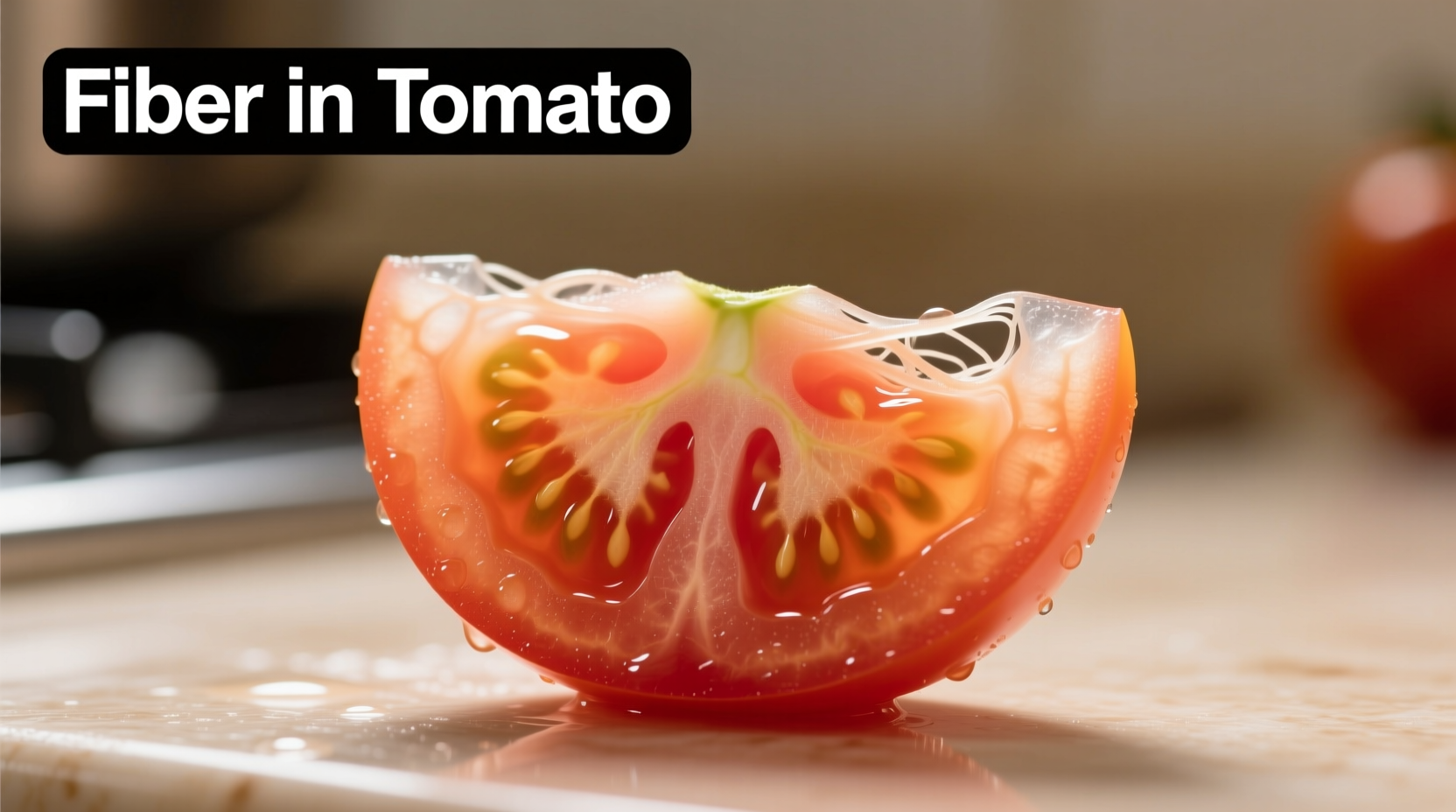When you're looking to boost your daily fiber intake through whole foods, tomatoes offer a versatile and nutrient-dense option that fits seamlessly into various dietary patterns. Understanding exactly how much fiber you're getting from tomatoes—and how to maximize those benefits—can transform your approach to healthy eating.
What Makes Tomato Fiber Nutritionally Valuable
Tomatoes contain both soluble and insoluble fiber, each serving distinct physiological functions. Soluble fiber forms a gel-like substance during digestion that helps moderate blood sugar spikes and supports healthy cholesterol levels. Insoluble fiber, which constitutes about 70% of tomato fiber, adds bulk to stool and promotes regular bowel movements.
The fiber distribution within tomatoes follows a specific pattern: approximately 60% resides in the skin, 30% in the gel surrounding seeds, and 10% in the fleshy pulp. This explains why processed tomato products like juice contain significantly less fiber than whole tomatoes—processing often removes the fiber-rich components.
| Tomato Form | Fiber Content (per 100g) | Fiber Type Distribution |
|---|---|---|
| Raw whole tomato | 1.2g | 70% insoluble, 30% soluble |
| Tomato paste | 2.0g | 65% insoluble, 35% soluble |
| Tomato juice | 0.5g | 50% insoluble, 50% soluble |
| Sun-dried tomatoes | 7.5g | 75% insoluble, 25% soluble |
This USDA FoodData Central data reveals how preparation methods dramatically impact fiber retention. Sun-dried tomatoes concentrate fiber through water removal, while juicing separates most fibrous components. For maximum fiber benefit, consume tomatoes with their skin intact—peeling reduces fiber content by up to 60%.
Tomato Fiber in Your Daily Nutrition Plan
The recommended daily fiber intake ranges from 25-38 grams depending on age and gender. A single medium tomato contributes approximately 6% of the daily requirement for women and 4% for men. While tomatoes alone won't meet your entire fiber needs, they serve as valuable contributors when incorporated strategically throughout your meals.
Consider these practical applications for maximizing tomato fiber benefits:
- Combine with complementary fiber sources: Pair tomatoes with beans (½ cup black beans + 1 tomato = 12g fiber) for synergistic digestive benefits
- Optimize preparation methods: Roast tomatoes with skin on rather than peeling before cooking
- Time your consumption: Include tomatoes in meals with healthy fats to enhance absorption of fat-soluble nutrients
- Preserve seasonal abundance: Make sun-dried tomatoes at home to concentrate fiber content for year-round use

Scientific Perspective on Tomato Fiber Benefits
Research published in the Journal of Agricultural and Food Chemistry demonstrates that the pectin-rich soluble fiber in tomatoes interacts with gut microbiota to produce short-chain fatty acids, which regulate inflammation and support colon health. Unlike supplemental fiber, tomato fiber delivers these benefits alongside lycopene, vitamin C, and potassium—creating a nutritional synergy that isolated fiber supplements cannot replicate.
The European Food Safety Authority recognizes tomatoes as a "source of dietary fiber" when providing at least 3g per 100g or 1.5g per 50g serving. While fresh tomatoes fall slightly below this threshold, concentrated forms like tomato paste and sun-dried tomatoes qualify as "high fiber" foods under these guidelines.
Common Misconceptions About Tomato Fiber
Several myths persist about tomato fiber that deserve clarification based on nutritional science:
- "Tomatoes don't contain meaningful fiber" - While not the highest fiber food, tomatoes provide valuable fiber alongside other nutrients
- "All tomato products have similar fiber content" - Processing dramatically alters fiber concentration (see comparison table)
- "Fiber content varies by tomato color" - Research from the USDA Agricultural Research Service shows minimal variation between red, yellow, and orange varieties
Understanding these distinctions helps you make informed choices about incorporating tomatoes into a high-fiber diet without falling for common nutritional myths.
Practical Integration Strategies
For those seeking to increase daily fiber intake through tomatoes, consider these evidence-based approaches:
- Add chopped raw tomatoes to salads with the skin intact—this preserves all fiber components
- Use tomato paste as a base for sauces instead of fresh tomatoes to boost fiber density
- Include sun-dried tomatoes in grain bowls for concentrated fiber benefits
- Make homemade salsa with unpeeled tomatoes for maximum fiber retention
- Combine tomatoes with other high-fiber vegetables like bell peppers and onions
Remember that gradual increases in fiber intake—paired with adequate hydration—prevent digestive discomfort. Adding one tomato daily provides approximately 10% of your recommended fiber increase when building toward optimal intake levels.











 浙公网安备
33010002000092号
浙公网安备
33010002000092号 浙B2-20120091-4
浙B2-20120091-4